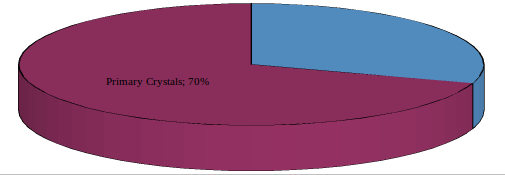![]() Crop Research Institutes recommend Eppawala Rock Phosphate fertilizer as an efficient source of phosphorus for tea, rubber and coconut plantations. Because Eppawala Rock Phosphate has a low solubility in water, it is not recommended for short-term crops. The primary goal of the country is to become and remain self-sufficient in agricultural production. Fertilizer is one of the main inputs, which makes this goal achievable. An effective way growers’ production cost is kept low is by ensuring that they get the inputs at a lowered price. That will make fertilizer use more acceptable and remunerative for them. To compete with imported varieties of phosphate fertilizers, High-Grade Eppawala Rock Phosphate was introduced which has fewer impurities than ERP.
Crop Research Institutes recommend Eppawala Rock Phosphate fertilizer as an efficient source of phosphorus for tea, rubber and coconut plantations. Because Eppawala Rock Phosphate has a low solubility in water, it is not recommended for short-term crops. The primary goal of the country is to become and remain self-sufficient in agricultural production. Fertilizer is one of the main inputs, which makes this goal achievable. An effective way growers’ production cost is kept low is by ensuring that they get the inputs at a lowered price. That will make fertilizer use more acceptable and remunerative for them. To compete with imported varieties of phosphate fertilizers, High-Grade Eppawala Rock Phosphate was introduced which has fewer impurities than ERP.
With the introduction of High-Grade Eppawala Rock Phosphate (HERP) in late 2002 the market totally absorbed it as a potential substitute for the various types of imported rock phosphates. Despite the absence of standard recommendations IRP imports have come down and its consumption has overtaken by HERP as shown in table 3. Only 110 mt. of IRP had been imported during the year 2003 and not a single ton of IRP had been imported during the year 2004. This itself clearly indicates that the recognition that has been earned by HERP within a short period of time.
Primary & Secondary Apatite
Eppawala Phosphate ore has two dominant separately mineable components that are greenish primary apatite crystals and brownish color aluminous-ferruginous-siliceous secondary apatite. Due to inclusion of aluminum, iron and silica secondary apatite has less solubility. The company mines these two components separately. The commonly available variety is aluminous-ferruginous-siliceous apatite is marketed as Eppawala Rock Phosphate (ERP) and the other component that is primary apatite crystals is marketed as High –grade Eppawala Rock Phosphate.

Percentages of Phosphate Crystals
Eppawala apatite contains an aluminous-ferruginous-siliceous fraction, which is unlike to be effective for rice and vegetables. However, the aluminous-ferruginous-siliceous fraction by far can be avoided by selectively mining to isolate the final apatite crystals that comprise about 70% of the deposit (Dahanayake & Subasinghe, 1991; Dahanayake 1994).
As far as we are concerned, we have doubts on the above conclusions because even primary apatite shows about 6-7% of citric acid solubility (Sri Lanka Standards, 2003). Rice grown even in acidic soil fertilized with HERP has not shown good results. In recent years long-term field experiments have been conducted in collaboration with principal rice research institutes in Batalagoda and Bombuwala with the application of HERP for paddy pararallywith the Triple Super Phosphate and Single Super Phosphate trials being carried out during 2003 and 2007. In addition, the experiments that have been carried out by Mahaillupallama since 2007 for the application of HERP for maize (corn) has shown that HERP is a poor source of phosphorus and it cannot be used. Moreover, the comprehensive research carried out by Coconut Research Institute (CRI) for years on application of HERP for coconut grown in dry zone has shown that HERP is not an effective source of phosphorus coconut grown in dry zone.
By and large, according to our studies, both HERP and ERP behave almost similarly in dry zone because the content of water vapors in dry zone soils is very low. Therefore, the solubility is very generally low resulting less release of (H2PO4_) to the soil. However, the dissolution can be increased by using organic manure. The humid acids released during the decomposition of organic matter dissolves some of the Rock Phosphate and increase its phosphorus availability. These experiments have clearly indicated that HERP is not capable of quickly releasing “P” for paddy. Therefore, it’s a question arises whether HERP in 100 microns size powder form of primary apatite crystals is not as effective on annual crops as concluded on theory. It is a known fact that sometimes theory contradicts with the application.
| 1 Mt. | 50 Kg Bag |
| Rs. 27,800.00 + (VAT 18%) | Rs. 1,390.00 + (VAT 18%) |











